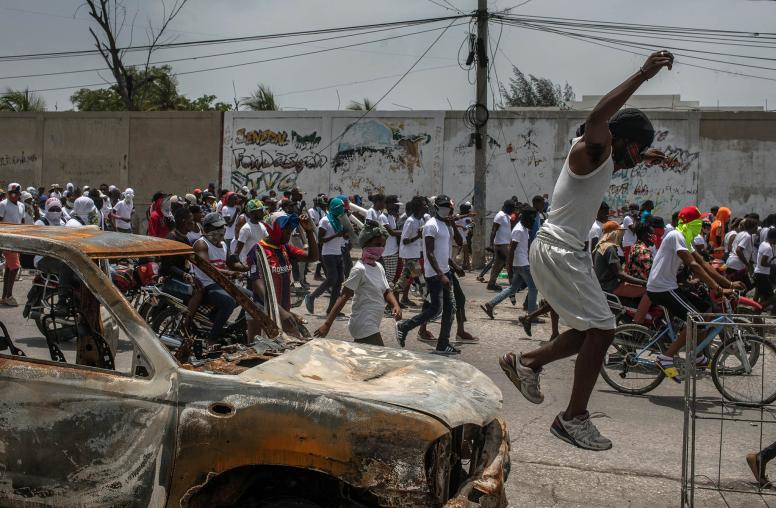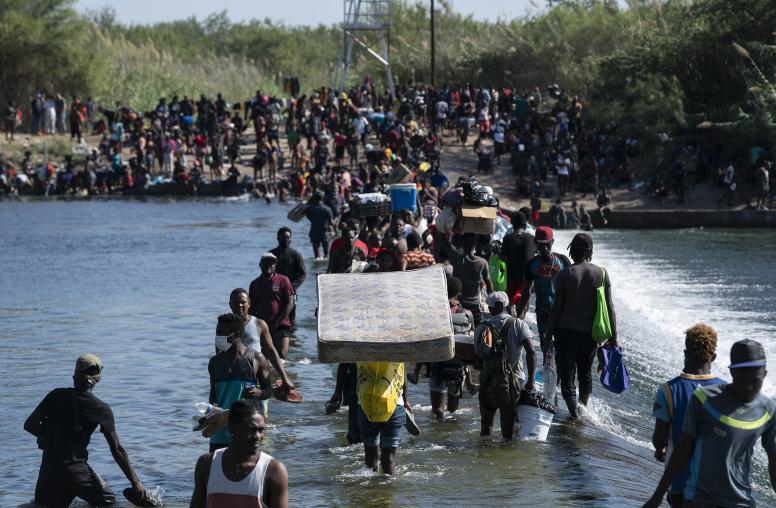Haiti: Three Years On

Three years after the devastating earthquake of January 12, 2010, Haiti is experiencing rebirth, but also the effects of repeated natural disasters. Haiti’s government has received regional diplomatic recognition and has launched a campaign to promote tourism and investment. Haiti is enjoying a rare period of political stability since Prime Minister Laurent Lamothe was installed in March 2012. Rubble is largely gone from the streets of Port-au-Prince. Construction has begun on new justice, interior and foreign ministries and parliament.
But squalid tent camps and massive numbers of displaced people are vivid reminders that international promises to rebuild Haiti better than before remain unfulfilled. Haiti continues to struggle to control a cholera epidemic, and Hurricane Sandy’s destruction of agricultural areas has left the country facing a food emergency.
On January 1, 2013, Haitian President Michel Martelly assumed the six-month, rotating chairmanship of the Caribbean Community (CARICOM), completing Haiti’s full return to the regional fold. In February, Port-au-Prince will host its first Inter-Session CARICOM meeting with Martelly in the chair. In a round of diplomatic visits, which included speeches at the U.N. and OAS, Martelly’s message has been that Haiti is open to tourism and promoting foreign investment. Haiti’s tourism minister, Stephanie Villedrouin, announced agreements with foreign airlines, construction of regional airports and tourism fairs in New York and Montreal. Construction has begun on Marriott and Best Western hotels to provide accommodations for business travelers. In 2012, the economy grew by 2.5 percent, and improved customs enforcement brought a jump in government revenue.
Inspiring investor confidence, however, requires resettling 348,000 homeless quake victims and dismantling nearly 500 tent camps in Port-au-Prince. Also required is rebuilding government infrastructure, including the presidential palace, and construction of adequate, safe and affordable housing for people in the capital.
Disbursement of $7.5 billion of post-earthquake assistance without notable improvements raised questions about how the money was spent and why remaining pledges from donor countries and private relief agencies remain on hold. Most of the money expended went for emergency relief -- tents, water, medicine and administrative costs. That was essential, but left no permanent imprint.
Meanwhile, the Interim Haiti Recovery Commission, which was to select reconstruction projects, saw its 18-month mandate expire with few results. New housing construction was hampered by uncertain land rights, poor planning, shoddy construction and cost overruns. At Zoranje, the largest project completed, four hundred new houses are unoccupied because there is no water, despite an $8.3 million investment by the Inter-American Development Bank. Six major tent camps have been cleared through government payments of rent subsidies, but most people have used the money to resettle in the city’s sprawling slums.
The large numbers of camp dwellers and generally unsanitary conditions have fueled a cholera epidemic that has killed 7,750 people and sickened thousands. Poorly patrolled tent camps have bred a parallel epidemic of violence against women. New U.N. appeals for money to fight cholera have gone largely unfunded. Failure to provide housing and resolve the attendant problems of crime and disease has caused the State Department to issue a stronger Travel Warning, urging U.S. citizens to exercise caution when visiting Haiti since local authorities have limited ability to control violence and handle emergencies.
In response, Prime Minister Lamothe protested that U.N. figures show violent death rates in Haiti actually were among the lowest in the Americas, and exaggerated warnings scare off investors.
Beyond the problems of Port-au-Prince, Haiti faces the dangerous menace of widespread hunger in rural areas. Hurricanes Isaac and Sandy destroyed 70 percent of crops and 64,000 head of livestock in the agricultural south. The U.N. estimates that 450,000 people are at risk of acute malnutrition and over a million more will go hungry; U.N. donor appeals for emergency aid raised only a third of $151 million requested. Rising food prices have boosted inflation. In 2008, a sudden spike in food prices led to riots that toppled the government.
Three years after the earthquake, do you think Haiti's government will manage the threatened food emergency or will price hikes and shortages send Haiti into another cycle of hunger and violence?
Robert Perito is director of the USIP Haiti Program.

